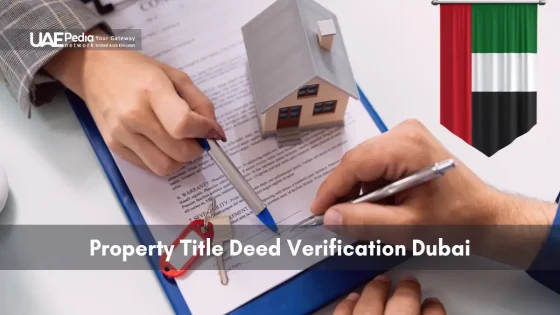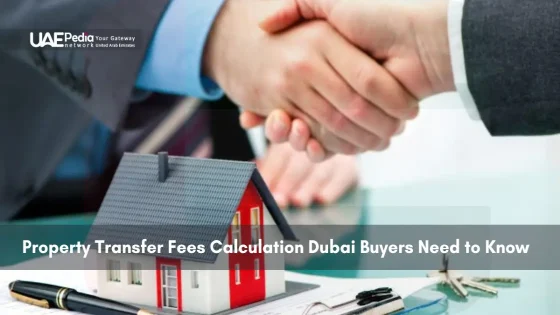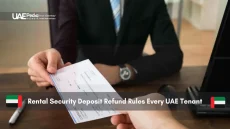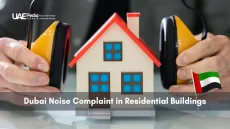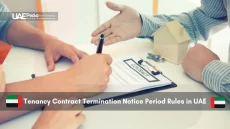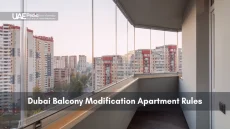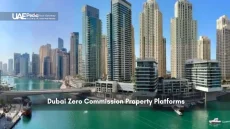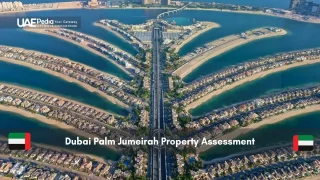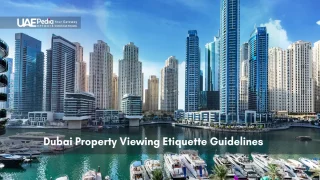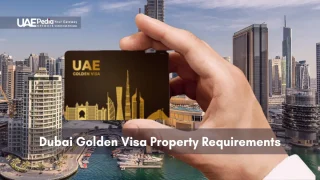What if the most crucial step in securing your dream home isn’t the down payment—but confirming you actually own it? In a city where skyscrapers bloom like desert flowers, safeguarding your slice of the skyline starts with one golden rule: always verify your ownership document.
Think of this guide as your trusted companion—like that friend who knows every hidden souk and shortcut. We’ll walk through how Dubai’s official channels, including the Dubai Land Department and their digital REST app, turn complex paperwork into smooth sailing. No dusty archives or endless queues—just your phone and 10 minutes.
Why does this matter? Imagine buying a luxury apartment only to discover a hidden mortgage or mismatched details. The emirate’s market moves fast, but smart buyers stay safer by cross-checking every detail. Digital tools now let you confirm authenticity from your couch—whether you’re in Dallas or Dubai.
Verify legal ownership before any Dubai property transaction by authenticating the title deed (or Oqood for off-plan) via the Dubai Land Department REST app or dubailand.gov.ae. These channels return real-time data on owner names, plot boundaries, encumbrances, and leasehold/freehold status.
Key checkpoints: exact spelling of all parties, contract/project numbers, and undisclosed mortgages. Resolve discrepancies with DLD before signing; digital queries reduce risk and processing time to minutes.
Here’s what you’ll gain:
- Clarity: Understand why this document is your legal lifeline in transactions
- Ease: Master the REST app’s features for instant record checks
- Security: Spot red flags like encumbrances before signing anything
Understanding Title Deeds and Their Role in Dubai Real Estate
Picture this: You’ve just found your perfect slice of Dubai’s skyline—but how do you know it’s truly yours? That’s where ownership certificates come in. Think of them as your golden ticket in the city’s fast-paced real estate world.
Your Legal Passport to Brick-and-Glass
An ownership certificate is your official proof that you hold rights to a space here. Issued exclusively by the Dubai Land Department (DLD), it’s like a birth certificate for your investment. This document:
- Maps exact boundaries and unit numbers
- Lists all current and previous owners
- Flags any existing mortgages or claims
“This isn’t just paper—it’s your shield against disputes,”
99 Years or Forever? Know Your Options
Dubai offers two main paths to stake your claim:
| Leasehold | Freehold | |
|---|---|---|
| Duration | Up to 99 years | Lifetime ownership |
| Payments | Annual fees to landowner | Full control |
| Hotspots | Selected communities | Palm Jumeirah, Downtown |
Leasehold ownership has a maximum duration of ~99 years and fewer rights, while freehold ownership is indefinite and grants full control—including land and structural rights. That’s why premium areas like Palm Jumeirah or Downtown are typically freehold. Ref.: “Property Finder (2025). Leasehold vs Freehold Properties in the UAE. PropertyFinder Blog.”
Off-plan Buyers get an Oqood certificate first—a temporary ID that converts to the full document upon completion. Like watching a skyscraper rise from blueprints to reality, your paperwork evolves with the building.
Pro tip: Use the DLD’s REST app to check a certificate’s status mid-sip of karak chai. It’s faster than hailing a taxi during rush hour!
The Oqood certificate is a government‑issued interim ownership record used during the off‑plan phase—it is legally binding and converts into a title deed upon project completion. Ref.: “Engel & Völkers (2024). Oqood Certificate – Dubai Off‑Plan Guide. Engel & Völkers Dubai.”
“Read Also: Real Estate Commission Negotiation Tips for UAE Property Transactions“
Preparing for a Successful Verification Process
Ever packed for a desert safari only to realize you forgot the sunscreen? That’s how it feels when you’re almost ready to confirm your stake in Dubai’s skyline—but missing one critical item. Let’s turn that “oops” into “all set” with a checklist sharper than a Bedouin’s coffee.
Your Trusty Camel: Documents That Carry the Load
Start with these essentials—think of them as your survival kit for navigating DLD protocols:
- Certified copies of your ownership certificate (like a VIP pass to skip disputes)
- Contract numbers and dates (found faster than sunset over Al Qudra Lake)
- Full names matching passport IDs (no nicknames—save those for brunch)
Pro tip: The REST app acts as your digital majlis here. Use it to pull up certificate details while lounging at your favorite café. Just search by unit number or developer code—simpler than ordering a karak chai.
When Sandstorms Hit: Dodging Legal Quicksand
Misspelled names or outdated contracts? That’s like building on shifting dunes. One investor nearly lost AED 500,000 because their contract listed “Mohammed” instead of “Muhammed.” One letter. Massive headache.
“Incomplete paperwork is the #1 cause of delayed transactions,”
Hidden mortgages are another sneaky foe. Imagine buying your dream villa, only to discover a previous owner’s unpaid loan attached like a shadow. Cross-check every detail through official channels—it’s cheaper than hiring a lawyer post-crisis.
Ready to outsmart the desert? Lay out your documents like a starry-night picnic. Match each item to the DLD’s requirements, then triple-check dates and spellings. Your future self will thank you when the keys slide into your hand—smooth as silk.
Dubai law strictly prohibits the transfer of property until any outstanding mortgage is fully cleared. The DLD can—and will—freeze the deed with the bank until the mortgage is removed. Ref.: “Kredium (2023). DLD – Role in a Property Buying Process. blog.kredium.ae.”
“Dive Deeper: Sharjah Waterfront Property Investment Opportunities for Foreign Investors“
Step-by-Step Guide: Property Title Deed Verification Dubai
Imagine holding proof of your stake in Dubai’s glittering skyline—right from your smartphone. Gone are the days of dusty files and endless queues. Here’s your digital toolkit to confirm ownership faster than a falcon’s dive.
Your Pocket-Sized Notary
- Download the REST app (iOS/Android) – it’s smoother than camel’s gait
- Tap Services > Ownership Check – the golden key icon
- Enter your certificate number or developer contract code
- Review instant results: green checkmarks mean clear ownership
The REST app returns results in **seconds**, allowing you to avoid costly office visits, skip queues, and reduce transaction time by hours—all from your phone. Ref.: “Bayut (2024). How to verify title deeds through the Dubai REST app. MyBayut by Bayut.”
“Digital checks are your first line of defense in smart investments,”
Desktop Deep-Dive Option
Prefer bigger screens? The official portal works like magic:
| Field | What You Need | Pro Tip |
|---|---|---|
| Deed Number | Found on page 2 | Check hyphens |
| Title Year | Issuance date | Use Gregorian calendar |
| Owner Name | As per passport | Copy-paste avoids typos |
Both methods reveal crucial intel in minutes:
- Legal status updates (no surprises)
- Encumbrance alerts (like hidden loans)
- Boundary confirmations (your plot’s GPS)
One investor recently uncovered an undisclosed renovation fee through the app’s detailed report. That’s the power of modern verification—saving time and dirhams while sipping karak chai.
Identifying Red Flags and Potential Pitfalls
Dubai’s real estate dazzles like a desert mirage—but some shimmering deals hide cracks in their foundations. Smart investors know: the difference between a secure purchase and a legal quicksand lies in spotting warning signs early.
Name Games and Financial Shadows
Imagine finding “Ahmed Al-Mansoori” on a certificate when the seller’s ID says “Ahmad Al-Mansouri”. One letter’s difference could unravel your entire transaction. Common red flags include:
- Ownership names mismatching passports or trade licenses
- Boundary descriptions that don’t match unit layouts
- Undisclosed loans appearing during verification checks
“Unverified documents are sandcastles—they crumble under scrutiny,”
Off-Plan Pitfalls: Blueprint Risks
Pre-construction projects tempt with lower prices, but come with unique hazards. Always check for:
| Risk | Consequence | Safety Check |
|---|---|---|
| Missing developer license | Project delays or cancellations | DLD website registration lookup |
| No Oqood certificate | Unclear interim ownership | REST app contract validation |
| Unregistered units | Future resale complications | Cross-reference with master community plans |
One buyer recently discovered their “luxury marina view” apartment faced a parking lot—all because they skipped boundary confirmations. Use official apps to pull 24/7 status updates, and never assume details match the brochure. Your vigilance today builds tomorrow’s secure investment.
“Related Articles: Dubai Economic Rent Calculator Online Tool for Fair Pricing“
Leveraging Digital Tools for Efficient Verification
Your smartphone just became the master key to Dubai’s real estate vault. While sipping karak chai at a beachside café, you can now validate ownership records faster than a sandstorm sweeps the dunes. Let’s explore how tech transforms tedious paperwork into tap-and-go confidence.
Your Pocket-Sized Legal Advisor
The Dubai REST app acts like a trusty sidekick for investors. Its standout features:
| Feature | Benefit | Time Saved |
|---|---|---|
| Instant Status Checks | Live updates on encumbrances | 3+ hours |
| Digital Deed Library | PDF downloads replace office visits | 2 days |
| Ejari Integration | Lease details sync automatically | 45 minutes |
“Think of REST as your 24/7 notary—always awake, always accurate,”
Double-Check Dance: App + Website Tango
Smart investors use this one-two punch:
- Pull transaction IDs from the app
- Input them on the official DLD portal
- Compare boundary maps with satellite overlays
One user spotted a mismatched unit number this way—the app showed “1402” while the website listed “1042.” Cross-referencing catches sneaky errors that single sources miss.
These tools don’t just save time—they build trust. With every digital confirmation, you’re stacking bricks of security around your investment. Ready to trade paper trails for pixel-perfect peace of mind?
Check out the below:
Securing Your Investment: Next Steps for Confident Property Ownership
Your keys to Dubai’s skyline aren’t just metal—they’re digital confirmations and cross-checked details. By now, you’ve seen how modern tools transform complex checks into coffee-break tasks. Let’s lock in your next moves.
Start with this power trio: the REST app for instant status updates, the official portal for boundary maps, and a magnifying glass for contract fine print. One investor we know combines these like a master barista—mixing digital speed with old-school diligence.
Found a mismatch? The Dubai Land Department’s team becomes your backstage crew. Their experts resolve discrepancies faster than a falcon spots prey. Remember—clear paperwork today means smoother moves tomorrow, whether you’re registering leases or applying for loans.
Ready to claim your slice of the Emirates? Double-tap that app, trust but verify every detail, then step forward. Your future self will raise a karak chai toast to this moment—when smart checks paved your path to confident investment.
Cross-check the Dubai Land Department’s online portal or REST app using the Tawtheeq number. This unique code links the deed to the unit’s floor plan, boundaries, and ownership history. Always request a recent copy from the seller and match it against DLD’s database.
Absolutely! The Dubai REST app lets you scan the deed’s QR code for instant validation. You’ll see ownership status, mortgage liens, and even service charges. For deeper checks, the DLD website provides transaction histories and developer approvals.
Unregistered or “pending” deeds. Always ensure the project is RERA-registered and escrow-backed. Use the DLD’s “Project Search” tool to confirm the developer’s license and construction progress. If the deed isn’t issued yet, demand an Oqood contract as interim proof.
Freehold deeds grant full ownership, common in areas like Downtown or Palm Jumeirah. Leasehold (common in older zones) means you “own” the unit for 10-99 years. The DLD portal specifies this—look for “Usufruct Right” or “Ownership Right” under the deed’s tenure details.
The Dubai REST app’s “Encumbrance Certificate” reveals active loans, court cases, or service fee debts. For added safety, hire a DLD-certified auditor to review the deed’s annexures. Red flags? A seller refusing to share the Ejari or NOC from the developer.
The “Ownership Timeline” shows every transaction since the deed was issued. Spot sudden transfers or short holding periods—could indicate flipping or disputes. Bonus tip: Enable push notifications for real-time updates if the deed’s status changes post-verification.
